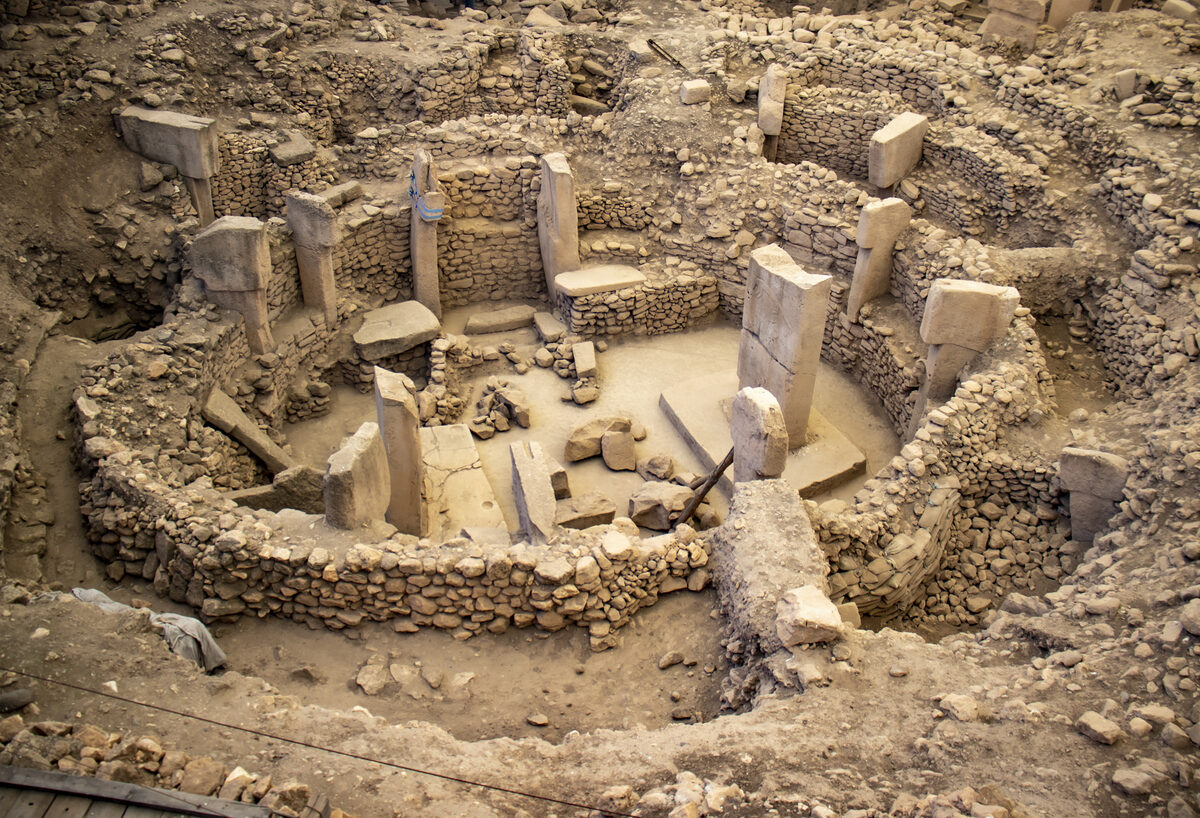 Getty Images/iStockphoto
Getty Images/iStockphotoLong before written language, before empires rose and fell, humans were building sacred places—structures and landscapes that meant something beyond survival. These weren’t just random piles of stones or curious formations. They were deliberately shaped to honour gods, mark the turning of seasons, or connect with something bigger than the day-to-day struggle of early life. And while the people who built them left no written record, they left us clues in the form of massive monuments, intricate alignments, and layers of ritual use. Here are some of the most mysterious sacred sites that predate written history.
Göbekli Tepe, Turkey
Often referred to as the world’s oldest known temple, Göbekli Tepe dates back over 11,000 years, predating Stonehenge by at least six millennia. It consists of massive stone pillars arranged in circles, many engraved with animals and abstract symbols. The site shows evidence of advanced planning, symbolic thought, and communal effort on a scale previously unknown for such an early period.
What makes Göbekli Tepe especially striking is that it was built by hunter-gatherers, not settled farmers. This challenges the old assumption that religion followed agriculture. It may actually suggest that spiritual life encouraged people to settle and build permanent societies.
Nabta Playa, Egypt
Located deep in the Nubian Desert, Nabta Playa was a ceremonial site used around 7,000 years ago. It features a stone circle aligned with the summer solstice and other stone structures thought to relate to astronomy and seasonal change.
The people who built Nabta Playa lived in a harsh, arid landscape. Their ability to observe celestial patterns and build a site to mark those patterns shows a deep connection between survival and spirituality. It’s considered a forerunner to the more famous structures of ancient Egypt.
Avebury, England
Older and larger than nearby Stonehenge, the Avebury henge is one of the most impressive Neolithic sites in Britain. Built around 2600 BCE, it consists of a massive circular bank and ditch enclosing a village and several stone circles.
While it’s not as visually dramatic as Stonehenge, Avebury’s sheer scale and complexity suggest it was a centre for ritual, gathering, and possibly healing. The site’s layout reflects a sophisticated understanding of space and landscape, and it was clearly of major importance to the people who built it.
Newgrange, Ireland
This enormous passage tomb in County Meath dates back to around 3200 BCE. It predates both the Egyptian pyramids and Stonehenge. At the winter solstice, sunlight shines through a small roof box and travels deep into the tomb’s main chamber, illuminating it perfectly for a few minutes.
The alignment shows incredible engineering skill and astronomical knowledge. However, it’s not just a feat of architecture, it’s a deeply spiritual site, likely tied to beliefs about death, rebirth, and the cycle of the sun.
Monte d’Accoddi, Sardinia
This site, often referred to as a Neolithic ziggurat, is unlike anything else in Europe. It’s a stepped, altar-like structure dating back to around 4000 BCE. The platform sits atop a mound and is accessed by a long ramp, with evidence of ritual use including animal sacrifices and offerings.
Monte d’Accoddi’s design hints at influences from the Middle East, but its uniqueness makes it hard to categorise. It seems to have been a ceremonial platform, perhaps used for seasonal rites or as a centre for community gatherings. Its builders left no written clues, but the structure speaks volumes.
The Ness of Brodgar, Scotland
On the Orkney Islands, between the famous Ring of Brodgar and the Stones of Stenness, lies the Ness of Brodgar, a complex of large stone buildings that served as a ceremonial centre over 5,000 years ago. Excavations have revealed walls painted with pigment, decorated pottery, and signs of feasting.
This was no humble settlement. It was a place where people gathered, possibly from across the islands and mainland Britain, to mark important events or perform rituals. The scale and sophistication of the site are forcing archaeologists to rethink how advanced Neolithic societies were in this region.
Poverty Point, USA
In northeastern Louisiana sits one of North America’s most overlooked sacred landscapes: Poverty Point. Built around 1700 BCE, this site features massive concentric earthen ridges, mounds, and a central plaza. It was a centre for trade, gathering, and ceremony.
What’s remarkable is that it was built by a culture with no known agriculture or written language. The planning and labour involved speak to a complex social structure and spiritual motivation. Mound-building was widespread in ancient North America, but Poverty Point remains one of the most impressive and enigmatic examples.
Carnac Stones, France
The Carnac Stones in Brittany include over 3,000 standing stones arranged in rows, circles, and tumuli. Thought to have been erected around 3300 BCE, possibly earlier, they are among the largest collections of prehistoric megaliths in the world.
Their exact purpose remains unknown, but theories range from astronomical observatories to burial sites to territorial markers. The sheer effort required to transport and align so many stones points to a site of immense cultural and spiritual importance.
Mnajdra Temples, Malta
Malta is home to some of the world’s oldest free-standing structures, and the Mnajdra Temples are particularly intriguing. Built between 3600 and 2500 BCE, they’re aligned with the rising sun at the equinoxes and solstices, suggesting a deep understanding of celestial cycles.
These temples were likely used for rituals tied to fertility, seasons, and nature worship. Carvings, altars, and ceremonial niches found within hint at a well-developed spiritual system long before written record.
The Hypogeum of Ħal-Saflieni, Malta
This subterranean temple complex was carved entirely out of limestone, likely beginning around 4000 BCE. The Hypogeum includes chambers, altars, and burial spaces, and its architecture is astonishingly sophisticated.
One of its most famous features is the “Oracle Room,” a chamber with exceptional acoustic properties. A deep male voice can be heard reverberating throughout the entire complex. Whether used for ritual chanting or other spiritual ceremonies, it shows how sound and space were used deliberately to shape experience.
These sites are older than the written word, yet they tell us so much. They speak of community, belief, awe, and a longing to understand the cosmos and our place in it. Without a single written account, these ancient places still manage to communicate something powerful, something that transcends language, time, and culture.



